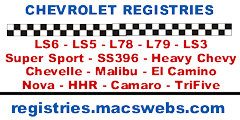1972 El Camino SS
Any comments/corrections/additions please send them to me and be
sure to specify which year.
![]()
1972 continued with the "one-size-fits-all" theme of RPO Z15 SS Equipment with any optional V8 and optional transmission available with the Z15 option.
Chevrolet did change the syntax of the VIN to indicate the series designation and included the engine size/hp for the first time. Fisher Body did not change the Style designation on the Fisher Body Number plate however and continued with 13680-type style numbers.
Including the engine size did help identify a Z15 optioned Chevelle in one respect. Since the 454 engine required the Z15 SS option, if the VIN has the letter "W" as the engine designation, the car had to be a Z15 SS-optioned Chevelle. While there is this change, Fisher Body Number plates still showed no indication of the option. Engine codes in the VIN were "W" for the LS5/454, "U" for the LS3/402, "J" for the L48/350-4, "H" for the L65/350-2, and "F" for the base/307-2 engines. As in 1971, three engines that could be ordered with the Z15 option could also be ordered without the option; LS3, L65, and L48. So any of these three engines would not prove or disprove the Z15 option. Interesting to note the LS3 was now called the Turbo-Jet 400 in various documents.
As with 1971, the 307 cubic inch engine could not be ordered with the Z15 option since it was not an optional engine but rather the base V8 engine. No documented 307 has been reported with the Z15 option.
Like 1971, not all SS-optioned Chevelles came with a 12-bolt rear end. The SS Equipment option was available with any optional V8 engine in 1972 as noted above. The L65 350-2bbl engine came standard with a 10-bolt rear end and only equipped with a 12-bolt rear end when the trailer option (RPO YD1) was ordered. The other 3 optional V8 engines (L48, LS3, and LS5) were outfitted with 12-bolt rear ends so when one of those engines was ordered along with the SS Equipment option a 12-bolt rear end was used. Positraction was still an option; an open rear end was standard. However, a 12-bolt rear end, as well as Positraction, was available on non-SS-optioned Chevelles as well so the presence of a 12-bolt (with or without Positraction) is not an indication of a 1972 SS-optioned Chevelle.
Chevrolet documentation notes that the Turbo-Fire 307, Turbo-Jet 400 (LS3) and Turbo-Jet 454 (LS5) engines were not available for registration in the state of California. That limits 1972 SS-optioned Chevelles from Van Nuys (to California dealers) to either the L65 350-2bbl or L48 350-4bbl engine.

This, from Chevrolet's documentation, shows the equipment supplied with
the Z15 option. Two 3-speed manual transmissions were back on the table
(M11 & MC1)for the two 350 engines as well as the 402, the 454 still
mandated either the M40 TH400 or M22 4-speed. Like 1971, when the 454
engine was ordered, the fender emblems displayed "SS454" and
when any other engine was ordered, only "SS" emblems were
displayed on the fenders on coupes and convertibles and the tail gate
of Custom El Caminos.
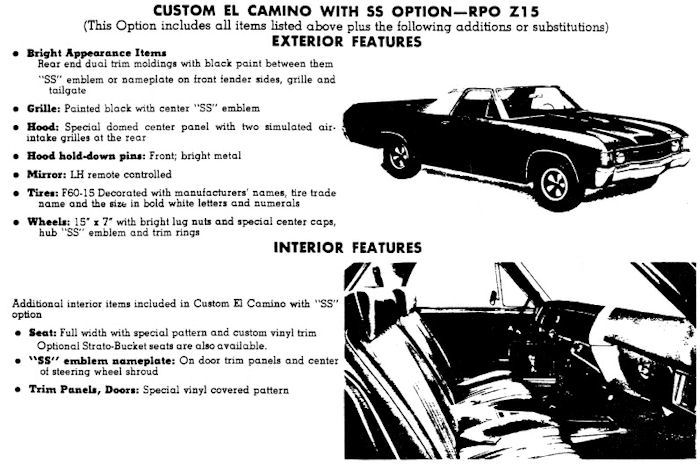
The ZL2 cowl induction hood was still available and listed as available for both the LS3 (402) and LS5 (454) engines. Hood locking pins continued to be part of the Z15 option as well as 15" x 7" wheels.
SS wheels and badging remained essentially unchanged from the 1971 model year.
Continuing from 1971 was the lack of bright trim in the engine compartment, even for the 454. The valve covers were painted orange just like the rest of the engine and the air cleaner was the typical satin black. Gone too were any engine size decals on the air cleaner.
As in the 1970 & 1971 SS-optioned Chevelles, the dash received
the round gauge pods but not optional gauges (tachometer/water temp/ammeter/clock)
unless they were ordered under RPO U14. Shown here is the standard SS
dash and note lack of optional gauges.
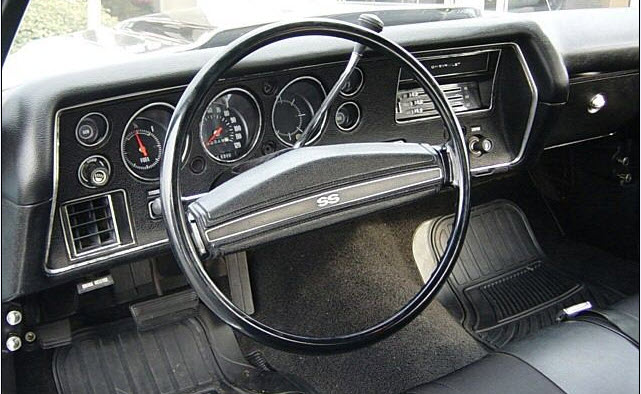
After November, 1971 a seat belt warning lamp was included in the
dash just above and to the left of the lighter element. At least one
very early November car (from Arlington, TX.) owner reports the warning
lamp provision is in the dash but there is no wiring.
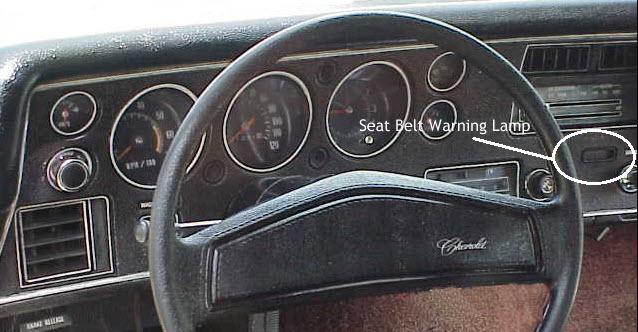
It's reported the back of the rear view mirror was changed from stainless steel to a flat black for safety reasons.
Horsepower ratings were changed in 1972 to reflect "SAE NET" standards. So even though the engines were essentially the same as 1971, ratings were changed from 245 to 165 for the L65 350-2 engine, 270 to 175 for the L48 350-2 engine, 300 to 240 for the LS3 402 engine, and 365 to 270 for the LS5 454 engine.
RPO D88 Hood & Deck stripes continued to be optional on all Malibu sport coupe, convertible, and Custom El Caminos with or without the Z15 option and as part of the ZL2 cowl induction hood package. See Exterior-Interior Combinations/Seat Belts/Stripe Colors for more details on stripe colors. The sales of the ZL2 cowl induction hood dropped even more to just 3,659 units sold.
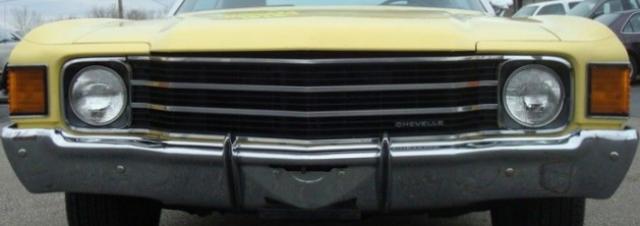
1972 saw the single horizontal bar from 1971 grow to two bars and the
bow tie emblem disappeared.

The bright center bars on the Malibu grille were blacked out on the
SS version and the obligatory "SS" emblem.
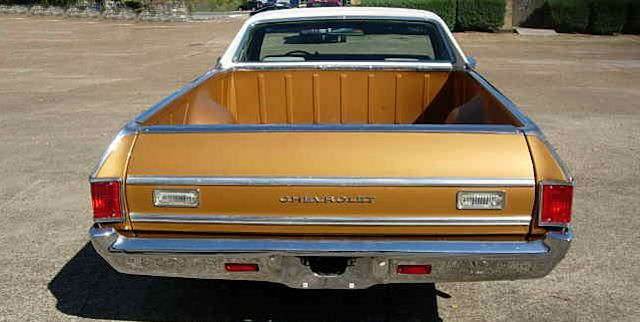
Base series El Camino (133/13480) tailgate with CHEVROLET script and
painted insert to match body color.
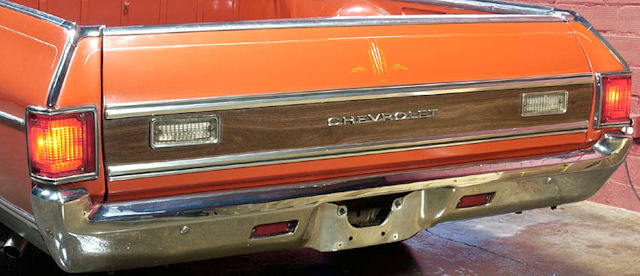
Malibu series Custom El Camino (13680) tailgate with CHEVROLET script
and wood-grain insert.

Malibu series Custom El Camino (13680) tailgate with SS (350-2, 350-4,
and 402-4) option SS emblem and blacked-out insert.
PHOTO WANTED OF AN SS454 EL CAMINO TAILGATE
There have been several reports from El Camino owners with the 454 engine that their LS5 El Camino did NOT have the 454 script even though the Factory Assembly Instruction Manual does call for them. There appears to be no correlation of assembly plant and/or timeframe to suggest a parts shortage or assembly plant SOP so it can only be attributed to negligence on the part of the assembly line and inspectors.



